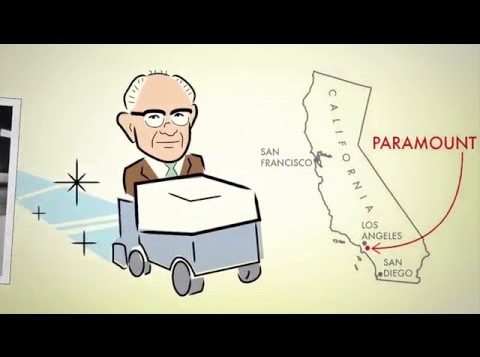This Day in Hockey History – July 27, 1988 – Zamboni On Ice
The most famous name on ice is not held by a hockey player, figure skater, coach, or other executive but by an inventor. Frank Zamboni (January 16, 1901 – July 27, 1988) invented the ice-resurfacing machine that would bear his name in 33 countries (by the time of his death). At that point, the Zamboni company had sold 4,000 machines, but in 2012, the 10,000th was sold for use at Montreal’s Bell Centre.
Ice was in Zamboni’s blood. His father, Francesco Giuseppe, hailed from the Tyrol, in the Alps of northern Italy. Zamboni’s parents came separately to the U.S. in the mid-1880s and married soon thereafter. The third of four children, Zamboni was born at Eureka, Utah but moved about a year later to a farm in Lava Hot Springs, Idaho, where he learned mechanical skills.
After his elder brother George set up an auto repair shop in a district of Los Angeles, in 1920 Zamboni and his younger brother Lawrence joined him. (Later, in 1948, Zamboni would help establish that Los Angeles area as the city of Paramount.) Working together, they saved enough for Zamboni to learn the electric business at Chicago’s Coyne Trade School. In 1922 back in California, Zamboni and Lawrence opened Service Electric Co. (later Zamboni Bros. Co.), an electrical service installing refrigeration and water pumping equipment for dairy farms. In the meantime, Zamboni also patented three electrical devices for New Way Electric Co.
In 1927, the brothers made block ice (for shipping vegetables by rail) with their ice-making plant, but with Willis Carrier’s patents coming in the 1930s, they closed their ice business in 1939. The following year, the Zamboni brothers (and their cousin Pete) kept their refrigeration equipment to build an ice rink – Iceland Skating Rink. Southern California had few rinks, and theirs was one of the largest in the country. The Zambonis soon added a dome roof to protect the ice from the sun, and then (in 1946) Frank patented a method that eradicated the rippling the pipe floors usually caused. The Zamboni family still operates the rink just blocks from their factory and test Zamboni machines there.
One major issue the Zamboni family had was keeping the ice surface smooth when it took five men 90 minutes to resurface by scraping, shoveling, spraying with water, and scraping again. Frank Zamboni began experimenting in 1942 and over the next eight years developed a machine that would do all that work at once. The original “unpainted, unwieldy contraption” combined the front ends of two old Dodge automobiles, a war-surplus Jeep engine, and a wooden bin. In mid-1949, he patented the “Model A Zamboni Ice Resurfacer,” which turned ice resurfacing into a one-man, 15-minute job.
He then began producing improved versions of these machines to sell by founding Frank J. Zamboni & Co. The first two (Model B) went to skating star Sonja Henie, another to the Pasadena Winter Garden, and a fourth to the Ice Capades (which the U.S. Hockey Hall of Fame has displayed). As the machine continued to improve, the Model E of 1954 became the first to be used by the NHL. The Boston Bruins were the first, and they later gave theirs to the Hockey Hall of Fame. Zamboni always told rink owners, “The principal product you have to sell is the ice itself.” He also continued to improve the machines, submitted his 15th and final patent at the age of 82 in 1983. His family still owns and operates the company he founded.
Mere months after receiving an Honorary Doctorate of Engineering from Clarkson University in Potsdam, New York and losing his wife (ten days before her 85th birthday), 87-year-old Zamboni died of cardiac arrest (and lung cancer) at Long Beach Memorial Hospital.
Zamboni has received much recognition for his contribution to skating. He was inducted into the following: Ice Skating Institute of America Hall of Fame (1965), United States Figure Skating Hall of Fame (2000), World Figure Skating Hall of Fame (2006), United States Hockey Hall of Fame (2009), United States Speed Skating Hall of Fame (2013). The NHL honored Zamboni in 2002 by naming him “Official Ice Resurfacer of the NHL.”
Additional Sources:
- Mike Commito, Hockey 365: Daily Stories from the Ice(Toronto: Dundurn, 2018), kindle edition.
- “Ice Surface Maker Zamboni Dies,”Los Angeles Times, 28 July 1988, p. 1.
- Burt A. Folkart, “Frank Zamboni: the Man Behind That Odd Machine,” Los Angeles Times, 29 July 1988, p. 20.
- https://zamboni.com/about/zamboni-archives/the-zamboni-story/
- http://zamboni.com/wp-content/uploads/2011/10/ManBehindTheMachine.pdf














